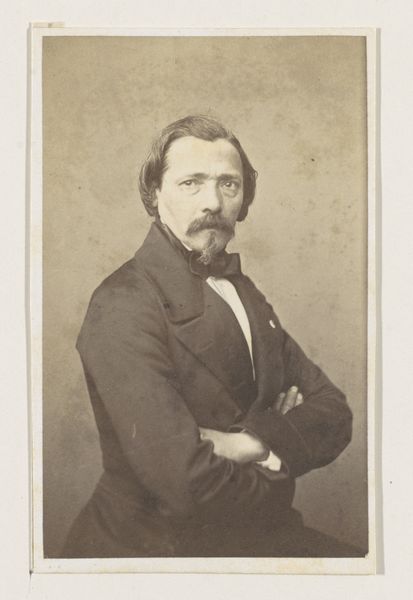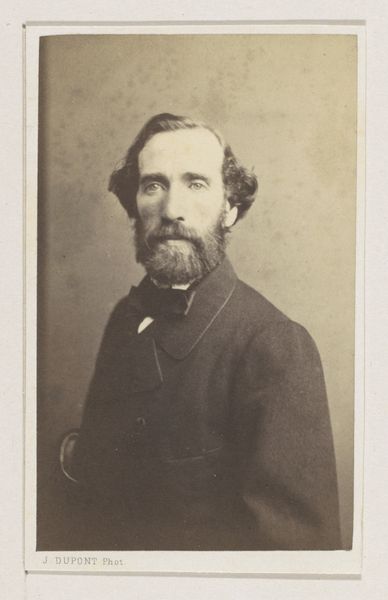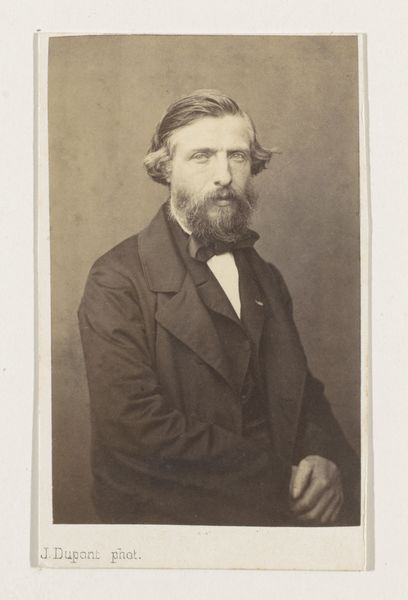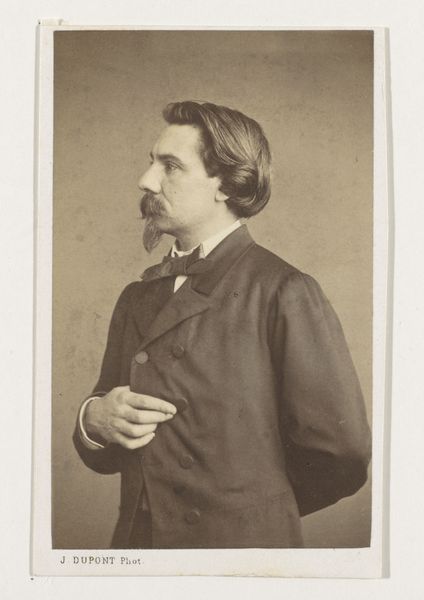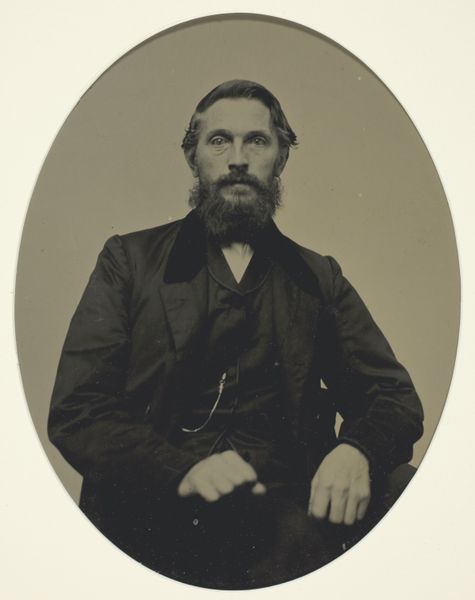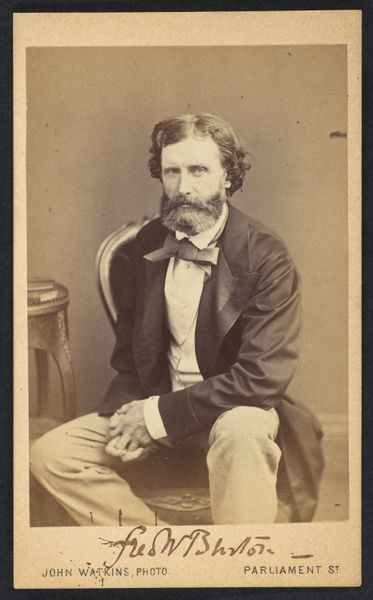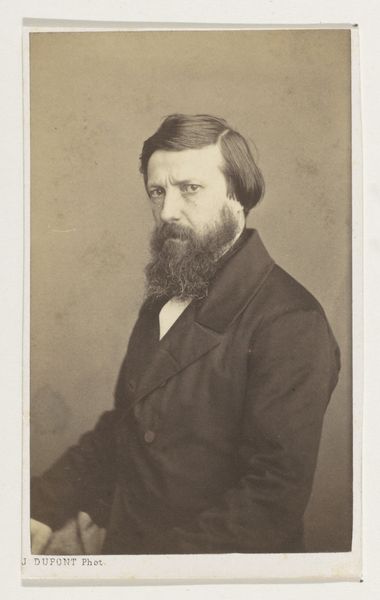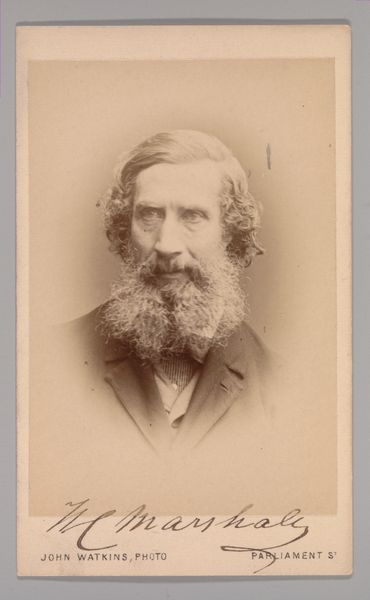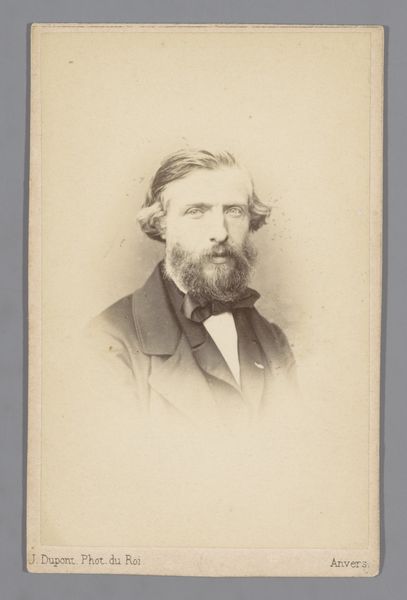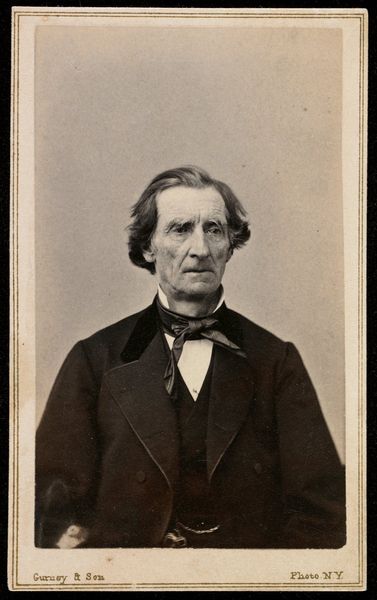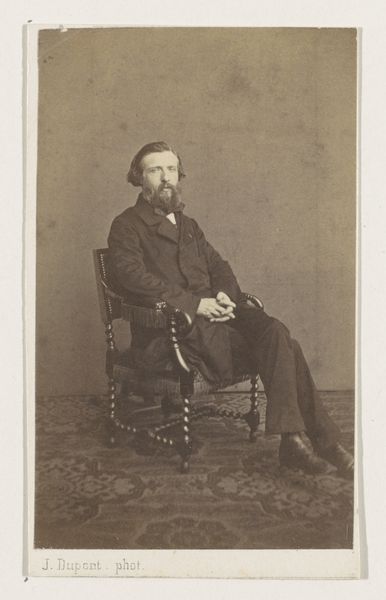
Dimensions: height 102 mm, width 62 mm
Copyright: Rijks Museum: Open Domain
Curator: This is a gelatin silver print from 1861 by Joseph Dupont entitled, "Portret van de schilder Pierre Kremer, halffiguur," which translates to "Portrait of the painter Pierre Kremer, half-figure." Editor: My immediate reaction is of subdued melancholy; the tonal range of the silver print feels quite limited, drawing my eye to the sitter’s slightly sorrowful gaze. Curator: Dupont was working at a fascinating moment when photography was emerging both as a technological marvel and a means to represent societal shifts. The prevalence of portraiture in this period speaks to the burgeoning middle class and their desire for visibility and documentation. Editor: I agree. Semiotically, the portrait is an index—a direct physical trace of the sitter. The almost sculptural rendering of Kremer’s face seems enhanced by the simplicity of the backdrop and even the somewhat stark lighting. Curator: Precisely. The sitter, Pierre Kremer, was himself a painter. So, it begs the question: How did artists like Kremer, who likely worked within established artistic hierarchies, view the rise of photography? Were they threatened, intrigued, or perhaps a bit of both by this new mode of representation that challenged traditional notions of skill and artistry? Editor: Good question. Certainly, Kremer appears to be participating in constructing his own identity, presenting himself as both bourgeois and intellectual via his formal attire and rather intense stare. The image oscillates between a claim for personal and professional respect. Curator: His serious demeanor, the careful arrangement of his scarf and coat, all seem to communicate a desire to be perceived in a certain light, as a person of intellect and standing. Yet there’s an underlying vulnerability, perhaps amplified by the directness of the photographic medium. The photograph itself makes visible anxieties around representation, status, and belonging during a time of great transformation. Editor: The portrait certainly acts as an insightful tableau that underscores both formal codes and subtle tensions in social standing in the mid-19th century. Curator: The ways the image intersects personal aspiration with the social, economic, and technological landscape offers fertile ground for thought.
Comments
No comments
Be the first to comment and join the conversation on the ultimate creative platform.
